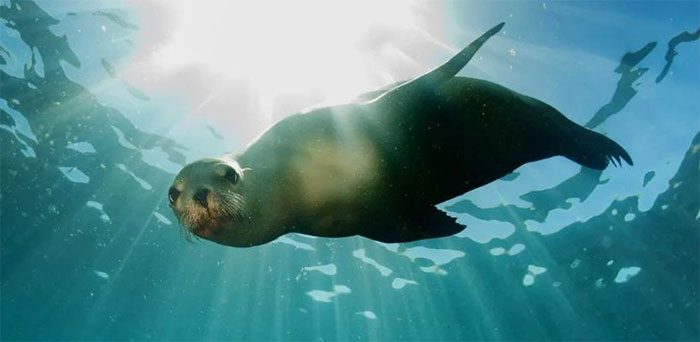Residents and visitors are advised to avoid any sea lions exhibiting unusual behavior, such as shaking their heads, foaming at the mouth, or showing signs of seizures, as they may be infected with domoic acid.
Normally, spotting sea lions on the beaches of California (USA) is an exciting experience. These animals are social and enjoy mingling.
However, beachgoers are currently warned to keep an eye out for the abnormal behavior of these marine mammals, as a bloom of toxic algae may be causing them to become infected and more aggressive.

Sea lions across California are threatened by a toxic algal bloom that produces neurotoxins – (Photo: SHUTTERSTOCK).
Why Are Sea Lions Infected with Domoic Acid?
Domoic acid is produced by a type of algae called Pseudo-nitzschia australis. This phytoplankton releases neurotoxins during certain blooms.
When enough toxins accumulate in the bodies of small prey, such as sardines and anchovies, they can transfer this poison to the animals that eat them, particularly sea lions.
Once ingested, the toxin attacks the brain and heart, causing seizures and heart failure. Typically, the toxin is expelled from the animal’s body over time, but repeated exposure can lead to permanent damage and death.
The end of June usually marks the time when sea lions migrate to the beaches of the Channel Islands, near Los Angeles, to give birth. However, this year their migration coincides with this toxic algae season.
The Crisis
Currently, marine mammal rescue teams are receiving up to 300 reports daily about sea lions exhibiting strange behavior, with around 150 found dead. Dozens of dolphins have also been discovered dead due to poisoning.
Experts are warning people to stay away from these animals and not to intervene.
According to Alissa Deming, a veterinarian at the Pacific Marine Mammal Center in Orange County, this is the worst domoic acid event to date. It has caused some sea lions to become aggressive if approached by humans.
Domoic acid can also affect humans if they consume fish contaminated with the toxic algae. They may experience diarrhea, dizziness, headaches, disorientation, and short-term memory loss. In severe cases, they may suffer from seizures, weakness, paralysis, and even death.


















































